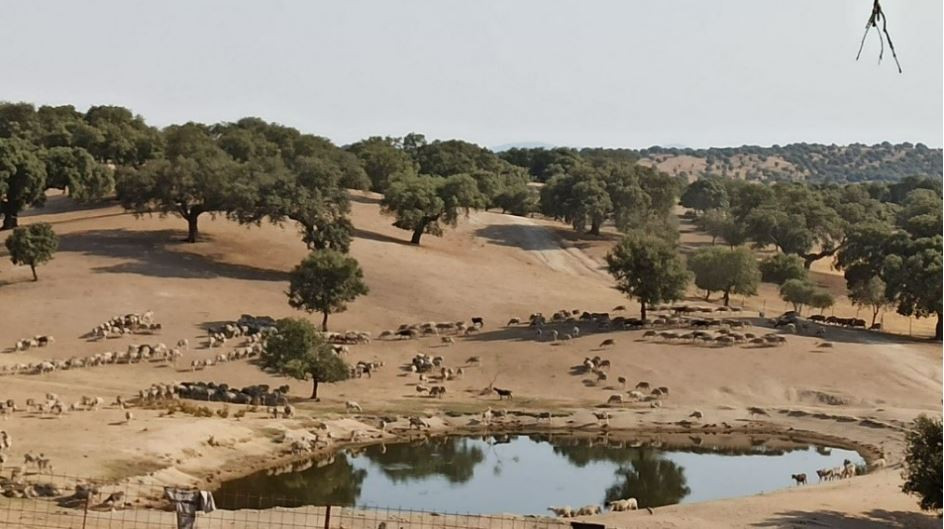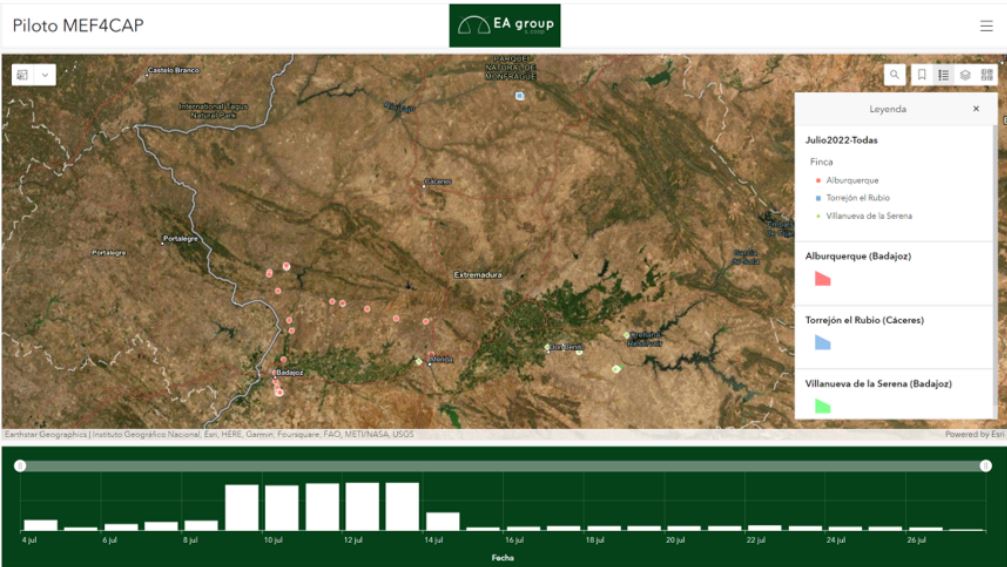Demonstration case four: Developing low-cost methodology and systems to illustrate compliance with Spanish extensive grazing eco-schemes


Demonstration case four: Developing low-cost methodology and systems to illustrate compliance with Spanish extensive grazing eco-schemes
An overview of demonstration case four, in Spain, which focused on developing low-cost methods for farmers to comply with Spanish extensive grazing eco-schemes.
Demonstration case four has been developed by Spanish Co-ops in collaboration with the EA Group cooperative and Digitanimal (IT company). It aims to provide livestock cooperatives and their administrators with a low-cost methodology and system to illustrate compliance with the Spanish extensive grazing eco-schemes. In addition, the implementation of a Geographic Information System (GIS) system (ESRI based software) with heat maps, enables farmers to monitor their livestock almost in real-time, enabling them to better understand which grazing areas have the most intensive activity.
Furthermore, the demonstration case will aim to provide proxy information about livestock carbon sequestration in the soil. By taking the average amount of manure/slurry produced by the sheep and comparing the value with that of the amount of carbon returned in the grazing process (extraction vs fixation).
In each herd (with approximately 1,000 sheep each), several sheep are monitored using GPS collars provided by Digitanimal. These collars have been placed on the animals' heads and are obtaining data on the entire production cycle (mating, gestation, calving and recovery).

Tracking sheep
Currently, the information captured through the collars is periodically uploaded to the GIS system and can be easily visualised through interactive dashboards. Through this it is possible to monitor the movements of the different flocks, monitoring when and where they are grazing.
In addition, staff at Córdoba University have been developing a methodology to convert in situ slurry/liquid manure deposition into carbon sequestration. On top of this, information on the animals’ age, batch and cycle stage has also been collected so it can be included in the dashboards to offer more detailed analysis.
Analysis so far has revealed that less than 10% of data sets have been received from the collars, due to the low connectivity in the area. However, the neck collars use different technologies (GSM, SIGFOX and SIGFOX with SD storage capacity), allowing for the recovery of the entire data sets on those with SD memory cards. This seems to be the optimal solution to overcome this issue until connectivity improves.
The cattle conundrum
The main challenge during implementation has been the collars monitoring the cattle. They require a strong network signal to transmit information and so far the signal has proved to be very low. In Digitanimal's preliminary study to test the best collar technology for the different areas (and their varying connectivity levels) it became clear that significant public or private investment would be needed in order to reach a minimum performance level.
Adaptable technology
The methodology developed in this demonstration case can be replicated for extensive grazing herd monitoring in cooperatives or/and any livestock farms. The technology used can be applied anywhere with minimal adaptation. However, for areas with connection problems, the collars that emit the information would have to be provided with an SD memory card.
Another benefit is that it is not necessary to place collars on the whole herd; with just a few collars it is possible to make a proportional calculation, making this an economically viable tool.

The second National Workshop in Spain
The second national workshop was held online on 13 February, with 35 extensive livestock cooperatives members and staff from different regions in Spain.
The meeting began with a presentation on the legal framework of the extensive grazing eco-scheme so the audience could understand the purpose of the demonstration case.
Following this, the current and future objectives, collaborations, and actions of the demonstration case were presented by Spanish Co-ops staff. This presentation included an overview of the GIS dashboard with updated information from the GPS trackers from July 2022 till February 2023. This outlined the main findings (most suitable technology, GIS possibilities, future data sets integrations, etc.) and challenges (connectivity issues, data analysis problems, etc.).
Finally, Digitanimal, the technology supplier, introduced the technology's uses and their experience with the three livestock farmers of the EA Group. In addition, the advisory services from the cooperative shared their view on the placement of the cattle collars and the most recent updates.
If you would like more information read the Lessons Learnt brief.